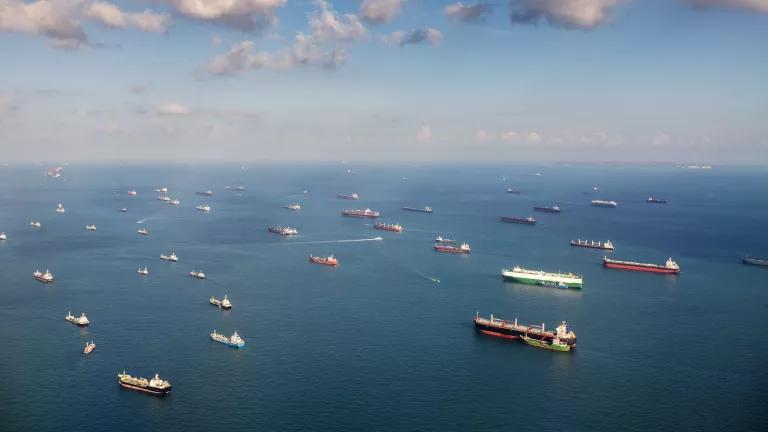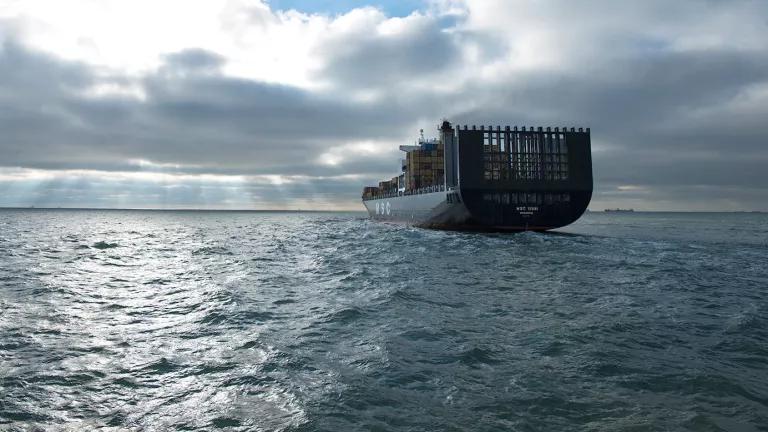Five Ways Climate Change Is Altering Our Oceans—and Harming Us
The IPCC report on our oceans and cryosphere is out. Here’s how the latest science reflects what’s happening to America’s coastal economies and ecosystems.
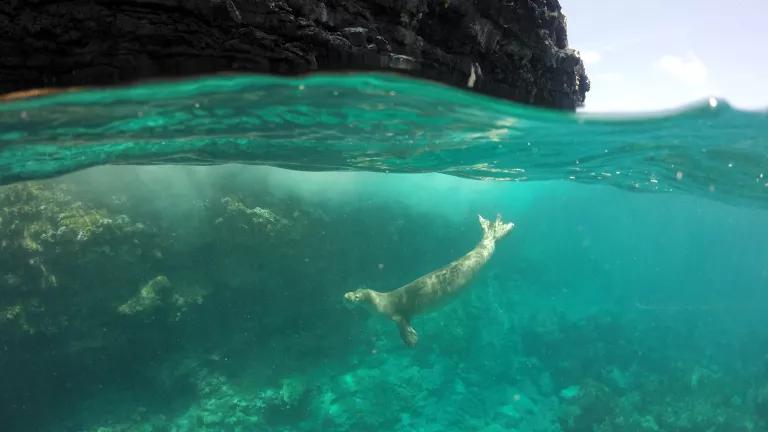
A monk seal swims over a coral reef in Hawaii
Our marine environment is the largest habitat on earth, so immense that more than 80 percent of it remains unobserved and unexplored by humans. Scientists believe that somewhere between 700,000 and one million species call it home, even if we’ve been able to identify only about 230,000 of them so far.
Of course, the oceans don’t just sustain marine life; they sustain us, too. Seafood accounts for nearly 17 percent of humanity’s protein intake, reaching more than 70 percent in some coastal and island nations. Fisheries and aquaculture support the livelihoods of at least 10 percent of all people living on the planet. And in the United States, more than 100 million people live in coastal counties, where the ocean plays a central role in shaping economic strength and cultural heritage.
Oceans and their ecosystems also play key roles in regulating global temperatures and protecting communities from some of the worst ravages of climate change. Our oceans absorb fully 93 percent of the heat trapped by greenhouse gasses and one-quarter of the carbon dioxide given off by the burning of fossil fuels. In warm, shallow waters along coastlines, coral reefs create natural barriers that protect communities from storm surge and erosion.
We both love and need our oceans. If they fail, we all do.
That’s an admittedly simplified distillation of a new analysis by the Intergovernmental Panel on Climate Change (IPCC) that should be seen as a complement to last year’s bombshell of an IPCC report on the consequences of allowing global warming to rise by more than 1.5 degrees Celsius. As the authors of the Special Report on the Ocean and Cryosphere in a Changing Climate (SROCC) observe, we are transforming the sea through our actions—and as we do so we’re interfering with the crucial role it plays for humanity, from stabilizing our climate to protecting coastal communities to providing food for billions.
This comprehensive report describes the extent of this transformation in great, and often discomfiting, detail. Scientists are seeing warning signs—clear signals that our life-giving, planet-protecting oceans are in deep distress: Elevated carbon dioxide in the atmosphere has caused ocean water to become an average of 1 °F warmer and 30 percent more acidic since the industrial revolution, and 2 percent lower in precious oxygen in the past 50 years. To coastal communities in the United States, these are more than just statistics. Many are feeling the consequences today—consequences beyond the devastating sea level rise and coastal erosion they’re already facing.
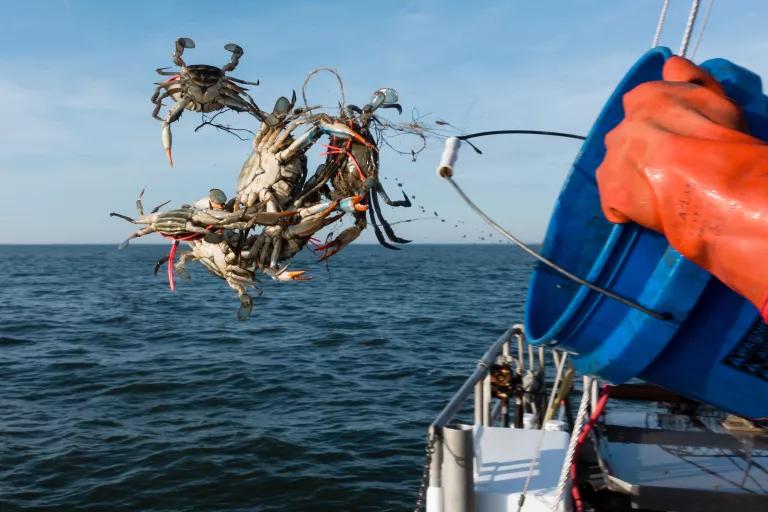
Scientists tag and return blue crab after a survey in the lower Chesapeake Bay
Fish Migration
Fish—cold blooded and temperature sensitive—are responding to warming ocean waters by moving toward the poles or to deeper waters. In the past 50 years, 70 percent of fish stocks monitored along the eastern United States have shifted their range northward to cooler waters. Black sea bass, once abundant off the coast of North Carolina, now concentrate near New Jersey and can even be found in New England. The American lobster fishery has disappeared from Long Island Sound, and landings in Rhode Island have declined from eight million to two million in less than 20 years. The Chesapeake Bay’s iconic blue crab has arrived in the Gulf of Maine, and Chinook salmon are wandering into Arctic rivers.
These ecological upheavals are reverberating throughout our coastal communities. Because fish agencies set catch quotas based on where fish have historically been located and caught, southern states still hold the highest allocations. As a result, southern fishermen are traveling northward to catch their quotas and fishermen from mid-Atlantic and New England states are suddenly surrounded by fish that they are not allowed to catch. Resulting territorial conflicts could lead to overfishing and reverse two decades of successful efforts to rebuild U.S. fisheries.
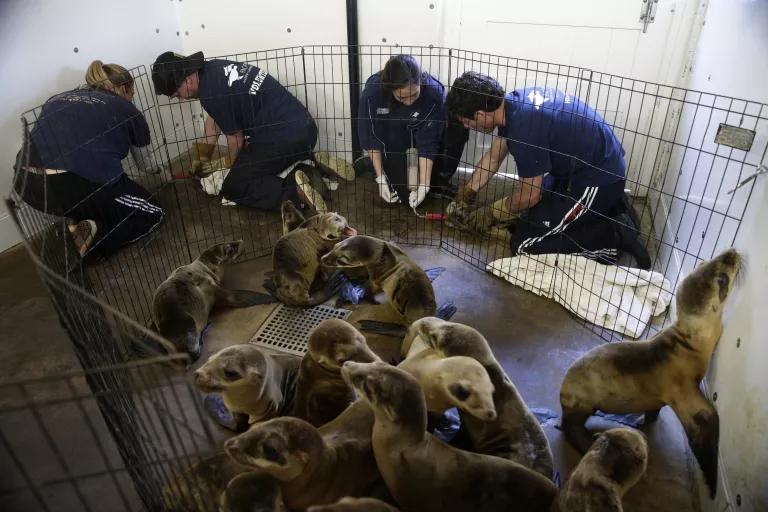
Staff at the Pacific Marine Mammal Center in California tube-feed sickly sea lion pups, which washed ashore in record numbers during a marine heatwave in 2015.
Marine Heat Waves
From 2014 to 2015, due to a confluence of oceanographic factors, an unusually warm water mass referred to by scientists as “the Blob” spanned nearly the entire west coast of North America, resulting in record-breaking water temperatures between 1 °C and 4 °C above normal. The extended marine heat wave devastated the ecosystems of the northeast Pacific Ocean. A large decline in plankton availability triggered a cascade of chaos farther up the food chain. Over the two years, populations of forage fish and their predators plummeted, ultimately leading to closures of important commercial and recreational fisheries. Thousands of dead seabirds washed up on beaches, and hundreds of marine mammals starved on their annual migration to their northern feeding grounds.
Scientists estimate that the frequency of marine heat waves has increased by 34 percent since 1925. Model projections suggest that they will increase by a factor of 20–27 by mid-century and 46–55 by the end of the century under a high-emissions scenario.
Harmful Algal Blooms
A combination of factors including water temperature, currents, nutrient levels, and ocean pH can trigger a harmful algal bloom (HAB), in which nuisance algae rapidly accumulate with toxic or harmful effects. Nearly every year since 2015, HABs with high concentrations of the neurotoxin domoic acid have forced closures of the West Coast’s profitable Dungeness crab fishery, costing the industry $48 million during the 2015–2016 season alone. Because HABs are closely associated with climate change and warming waters, the Pacific Coast Federation of Fishermen’s Associations has sued 30 fossil fuel companies for damages caused by these blooms.
Corrosive Waters
Ocean acidification occurs as excess CO2 from the burning of fossil fuels dissolves into the sea, forming an acid and making the water more corrosive. This process, happening across the globe, is especially dangerous in the Pacific Northwest, where the waters are naturally more acidic to begin with. In the summer of 2007, the Whiskey Creek Shellfish Hatchery in Oregon noticed a dramatic increase in mortality in their crop of baby oysters. As this hatchery provides oyster seed to dozens of shellfish producers in the region, the Pacific Northwest aquaculture industry—which pumps more than $270 million into coastal and rural economies—was in a state of crisis. Scientists linked the unexpected mortalities to corrosive water made worse by ocean acidification. Through investments in research and development, Whiskey Creek and other aquaculture facilities in Oregon and Washington have found ways to protect their business from ocean acidification, for now.
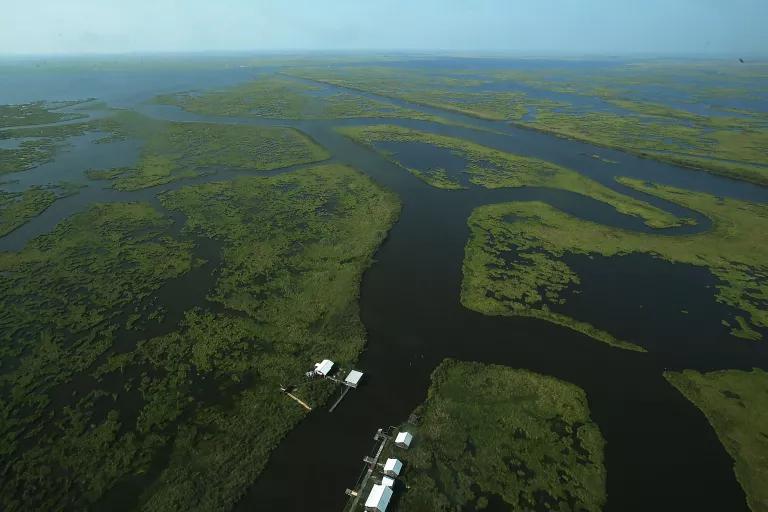
Deteriorating wetlands in Plaquemines Parish, Louisiana, 2015
Extreme Weather Events
Unusually heavy rains in the Midwest this past spring not only caused widespread damage to agriculture crops in the region but also sent a small tidal wave of freshwater down the Mississippi River and into the Gulf of Mexico. This rapid influx of freshwater into the Gulf’s estuaries damaged oyster, crab, and shrimp populations, which need a certain level of salinity to survive. Commercial fisheries were impacted so substantially that the governors of Mississippi and Louisiana called for disaster assistance. Extreme weather events, including above-average rainfall, are expected to increase with unabated climate change.
To reverse the tide of harm, we must take action on climate now.
We’ve already changed our oceans. But because their climate systems tend to react slowly to external factors, there’s still time to mitigate the damage. There are three priority actions world leaders need to take immediately to ensure the health of our oceans:
- Increase efforts to reduce greenhouse gas emissions and address the climate crisis, developing specific targets to reduce CO2 to be certain to combat ocean acidification in addition to warming.
- Enhance climate resilience of ocean ecosystems by establishing and preserving Marine protected areas over 30 percent of our oceans.
- Prioritize the safeguarding of coastal habitats such as mangroves, seagrass beds, and salt marshes that act as carbon sinks, both to maximize the carbon mitigation potential of the oceans and to provide storm protection to vulnerable coastal communities.



